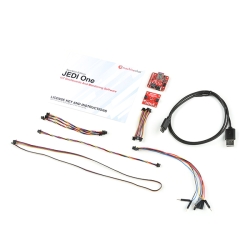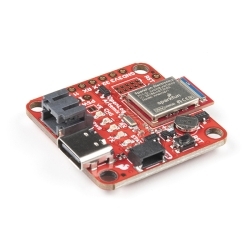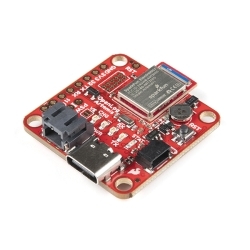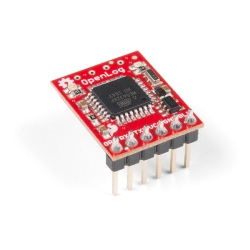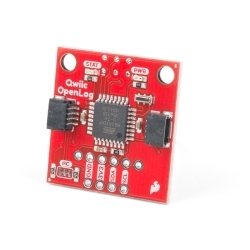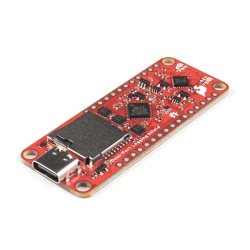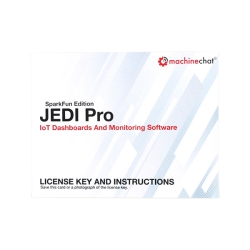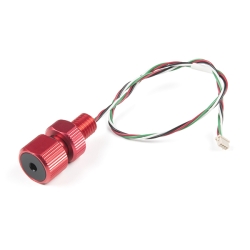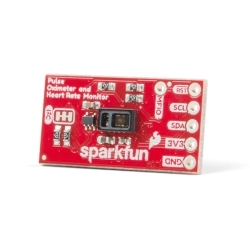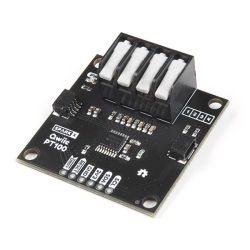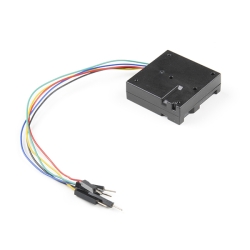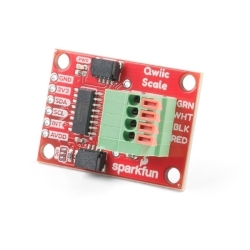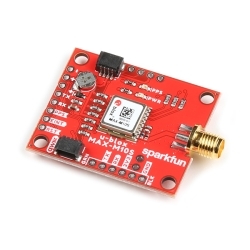SparkFun OpenLog Data Collector with Machinechat - Air Quality Monitoring
The Air Quality Monitoring version of the OpenLog Data Collector Kit with Machinechat allows you to display your data with the OLA, SGP40, and JEDI One.
Helpful Documentation
Product Overview
The Air Quality Monitoring version of the SparkFun OpenLog Data Collector Kit with Machinechat is an easy way to organize and display your data from an included SGP40 Qwiic Air Quality Sensor with the OpenLog Artemis and JEDI One. The SparkFun OpenLog Artemis (without IMU) is an open source data logger that comes preprogrammed to automatically log GPS / GNSS, serial data, and various pressure, humidity, and distance data as well as the ability to expand out to any number of our Qwiic sensors. This makes it ideal for data collection, and to display that data, Machinechat's JEDI One will be your best friend!
Machinechat's JEDI One provides an easy-to-use, customizable, one stop dashboard solution for IoT data collection, transformation, visualization, and reporting. Built-in HTTP and TCP servers allow you to start collecting data from sensors and devices in minutes, and custom plug-ins allow you to collect data from virtually any sensor or device. In addition, a fully integrated and self-contained MQTT broker makes it easy to integrate any MQTT based device or sensor. No need to set up a separate broker or use Azure or AWS for MQTT. Just configure and go!
The SparkFun SGP40 Air Quality Sensor provides a measurement of the quality of the air in your room or house. The SGP40 is based on Sensirion's CMOSens® technology and uses a metal oxide (MOx) sensor with a temperature controlled micro hotplate and provides a humidity-compensated volatile organic compound (VOC) based indoor air quality signal. Both the sensing element and VOC Algorithm feature an unmatched robustness against contaminating gases present in real world applications enabling a unique long term stability as well as low drift and device to device variation.
Simply connect the BME280 Breakout of another compatible Qwiic-enabled device, power up the OpenLog Artemis, and all incoming serial data is automatically recorded to a log file with baud rates up to 500000bps, supported! The OLA also has four ADC channels available on the edge of the board. Voltages up to 2V can be logged with 14-bit precision up to 1900Hz for one channel and 1000Hz logging all four channels. Additionally, based on feedback from users we've added an on-board RTC so that all data can be time stamped.
The OpenLog Artemis is highly configurable over an easy to use serial interface. Simply plug in a USB-C cable and open a terminal at 115200bps. The logging output is automatically streamed to both the terminal and the microSD. Pressing any key will open the configuration menu.
Included in this kit, you will find an OpenLog Artemis (without IMU), an SGP40 Qwiic Atmospheric Sensor Breakout, a unique JEDI One license, and connector cables. Additional sensors must be purchased separately. If you are interested in picking up a different version of this kit, be sure to check out the Base Kit or Environmental Monitoring Kit, instead!
Note: The version of OpenLog Artemis included in this kit has the ICM-20948 IMU sensor removed. This IC is becoming increasingly difficult to locate. This version still supports auto-detection and logging of over a dozen sensors and GNSS receivers.
Includes:
Features & Specs
SparkFun OpenLog Artemis (without IMU):
- Artemis Module (Cortex-M4F based Apollo3 microcontroller)
- Configurable via CH340E and Artemis Firmware Upload GUI
- Operating voltage range
- 3.3V to 6.5V (via VIN with optional external power switch)
- 5V with USB (via 5V or USB type C)
- 3.6V to 4.2V with LiPo battery (via VBATT or 2-pin JST)
- Built-in MCP73831 single cell LiPo charger
- Minimum 450mA charge rate
- 3.3V (via 3V3)
- Current consumption
- ~20mA (Run)
- ~80µA (Sleep)
- ~18µA (Deep Sleep - regulator shut down)
- Ports
- 1x USB type C
- 1x LiPo battery enabled
- 1x Qwiic enabled I2C with power control
- 1x SWD 2x5 header
- 4x Analog-to-digital
- 14-bit, up to 1900Hz, 2V max (3.3V compatible)
- Serial
- Logging speeds up to 500000bps [1]
- 1x microSD socket
- Support for FAT32 and older FAT16 formats up to 32GB with power control
- RTC with 1mAhr battery backup
- LEDs
- Power
- LiPo charge indicator
- Serial Tx and Rx
- Status
SparkFun Air Quality Sensor - SGP40 (Qwiic):
- Uses I2C interface (Qwiic-enabled)
- I2C Address: 0x59
- 2x Qwiic connectors
- Operating voltage range:
- 1.7V - 3.6V (Typ. 3.3V)
- The Qwiic interface provides 3.3V
- Typical current consumption:
- 2.6mA during continuous operation (at 3.3V)
- 34µA when idle (heater off)
- Output signal:
- Digital raw value (SRAW): 0 - 65535 ticks
- Digital processed value (VOC Index): 0 - 500 VOC Index points
- Switch-on behavior:
- Time until reliably detecting VOC events: <60s
- Time until specifications are met: <1h
- Recommended sampling interval:
- VOC Index: 1s
- SRAW: 0.5s - 10s (Typ. 1s)
Machinechat Requirements:
- Intel x86 PC or server
- Microsoft Windows 10
- Apple Mac OS 10.13.6 and above
- Ubuntu Linux 16.04 and above
- Memory : 4GB or greater
- Storage : 30MB min of disk space
Documentation
SparkFun OpenLog Artemis (without IMU):
- Schematic
- Eagle Files
- Hookup Guide
- Board Dimensions
- Datasheet (Apollo3)
- Artemis Integration Guide
- Designing with the SparkFun Artemis
- Artemis Development with Arduino
- Arduino Core
- Artemis Forums
- Artemis Info Page
- Qwiic Info Page
- CH340E USB Drivers
- Artemis Firmware Uploader GUI
- Latest default firmware: v2.2
- Geophone Logger firmware for logging seismic activity
- GNSS Logger for advanced data logging with the uBlox F9 and M9 GNSS modules including support for RAWX and RELPOSNED
- GitHub Hardware Repo
SparkFun Air Quality Sensor - SGP40 (Qwiic):
- Schematic
- Eagle Files
- Board Dimensions
- Hookup Guide
- Datasheet (SGP40)
- Sensirion VOC Index for Experts
- Sensirion SGP40 Design In Guide
- SGP40 Quick Testing Guide
- Arduino Library
- Python Package
- GitHub Hardware Repo
Machinechat:
Customer Reviews
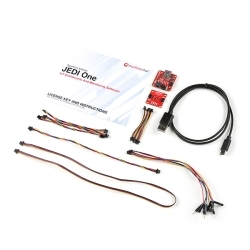


 Hookup Guide
Hookup Guide Schematic
Schematic Datasheet (Apollo3)
Datasheet (Apollo3)
